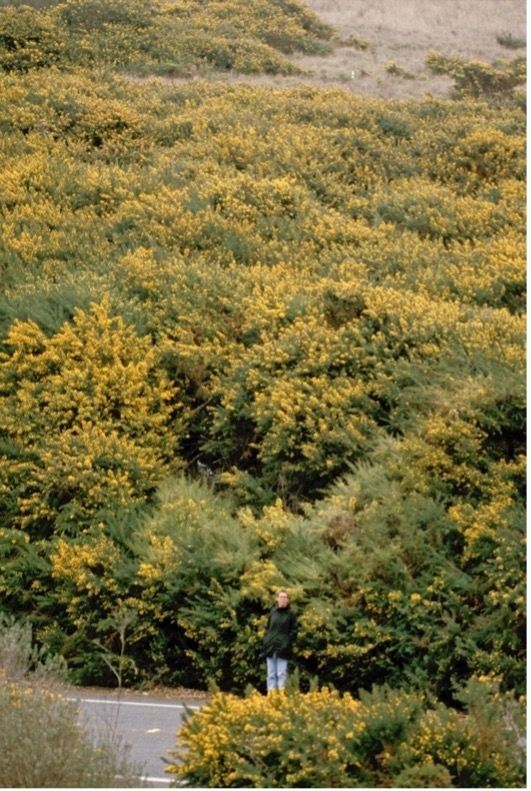The Invasive Pest Spotlight focuses on relevant or emerging invasive species in California. In this issue we are covering brooms, a group of invasive shrubs.

Brooms are upright shrubs in the legume family that typically produce small, yellow, pea-shaped flowers. Shrubs range from 3 to 10 feet tall. They produce flowers from mid spring to summer and produce seed pods in late summer. All brooms are prolific seed producers, with a single shrub producing as many as 2,000 to 3,500 pods containing up to 20,000 seeds.
While brooms are attractive plants, they grow in dense stands that outcompete many native plants. These dense stands are highly flammable and increase the risk of wildfires. The most common species found in California are Scotch broom, French broom, Spanish broom, and Portuguese broom. Scotch broom is often found on interior mountains and on lower slopes in Northern California and is very prevalent in the Sierra Nevada foothills. Without management, these plants can survive for about 12 to 17 years, producing thousands of seeds.
Actions You Can Take
First, avoid planting any broom species. While most retailers do not sell the most common invasive brooms, many do sell hybrids that could become highly invasive in the natural landscape. There are similar-looking alternatives to brooms, such as forsythia and golden currant. Contact your local UC Master Gardeners or visit PlantRight.org for a list of other alternatives.
If you have brooms on your property and want to remove them, there are many different nonchemical and chemical methods that are effective in controlling these plants. These options are extensively detailed in the UC IPM publication Pest Notes: Brooms.
Original source: UC IPM's Home & Garden Pest Newsletter Summer 2023 issue